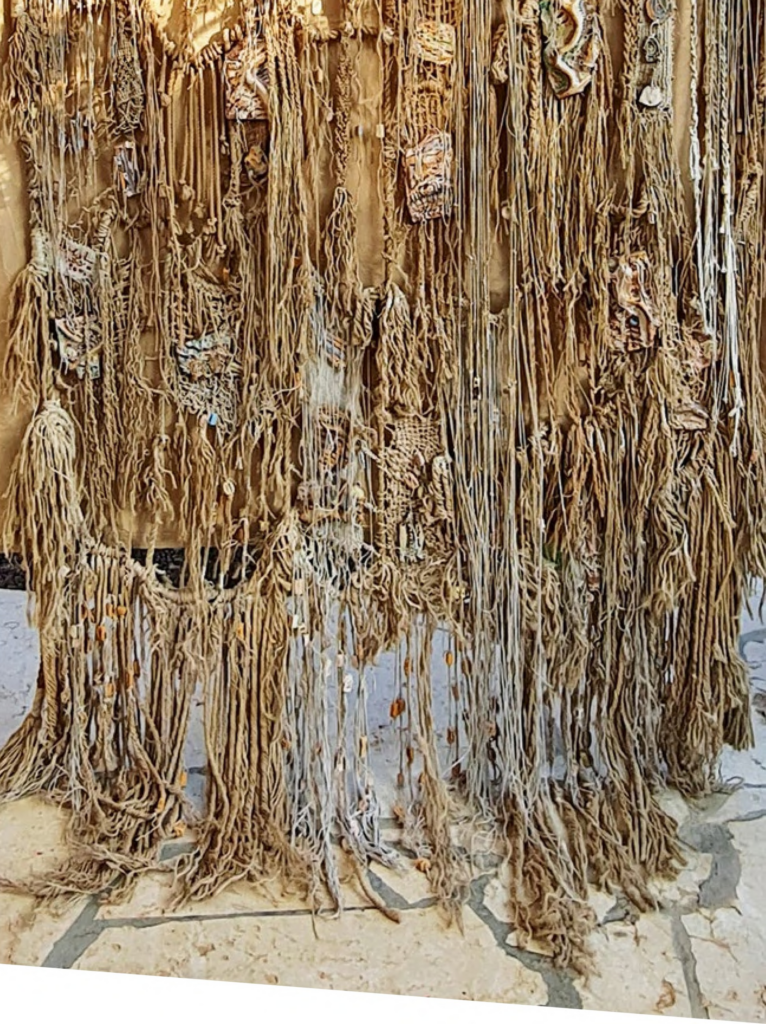SAMIA ZARU
Born in 1936 in Nablus, Palestine, lives and works in Amman, Jordan
Life Is a Woven Carpet (1995) , Life Is a Woven Carpet (2001)

Samia Zaru’s work encompasses a wide spectrum of media, from painting to sculpture, design, embroidery, and welding and casting. Her installations, public murals and smaller scale works probe questions of Arab identity, representation, and memory through abstract interpretations of traditional imagery and crafts. Across her much celebrated, decades-long practice, she has also employed materials such as wood, local dyes, ropes, and Palestinian embroidery work. Trained in fine arts at the American University in Beirut and then at the Corcoran School of Art and Design at the American University in Washington DC, she was named Woman of the Year by the American Geographical Institute in 2000 and received the 2012 Takreem Award for Cultural Excellence. Zaru is also known for her role as an educator, having served as a UNESCO consultant on policies to enhance arts education and working tirelessly to revive traditional design in the Arab and Islamic world. Her educational activities have included lecturing and presenting television programs on the arts geared towards children, alongside her role as a professor of art at the University of Jordan.
Presented at the Biennale are two large-scale textile works by the same title: Life is a Woven Carpet(1995) and Life is a Woven Carpet (2001). Comprised of woven, net-like hangings of rope with various appended materials including fragments of textiles, pieces of clay used in the traditional buildings of Palestine, and glass fragments, the works reflect the artist’s idea of life as a rich fabric of threads with knots, tangles, and empty spaces. The material accumulation of textures, atmospheres, colors, and lines becomes a metaphor for human experience and an expansion of knowledge. Reflective of Zaru’s preoccupation with making works that break down social and religious boundaries, the openness of the woven netting and rope become a framework for free-association—each viewer can choose an individual entry point from which to experience and survey the work. In the words of the artist: “This, in my opinion, is the fourth dimension—interaction, and continuous wonder and engagement between one human production and another.”
